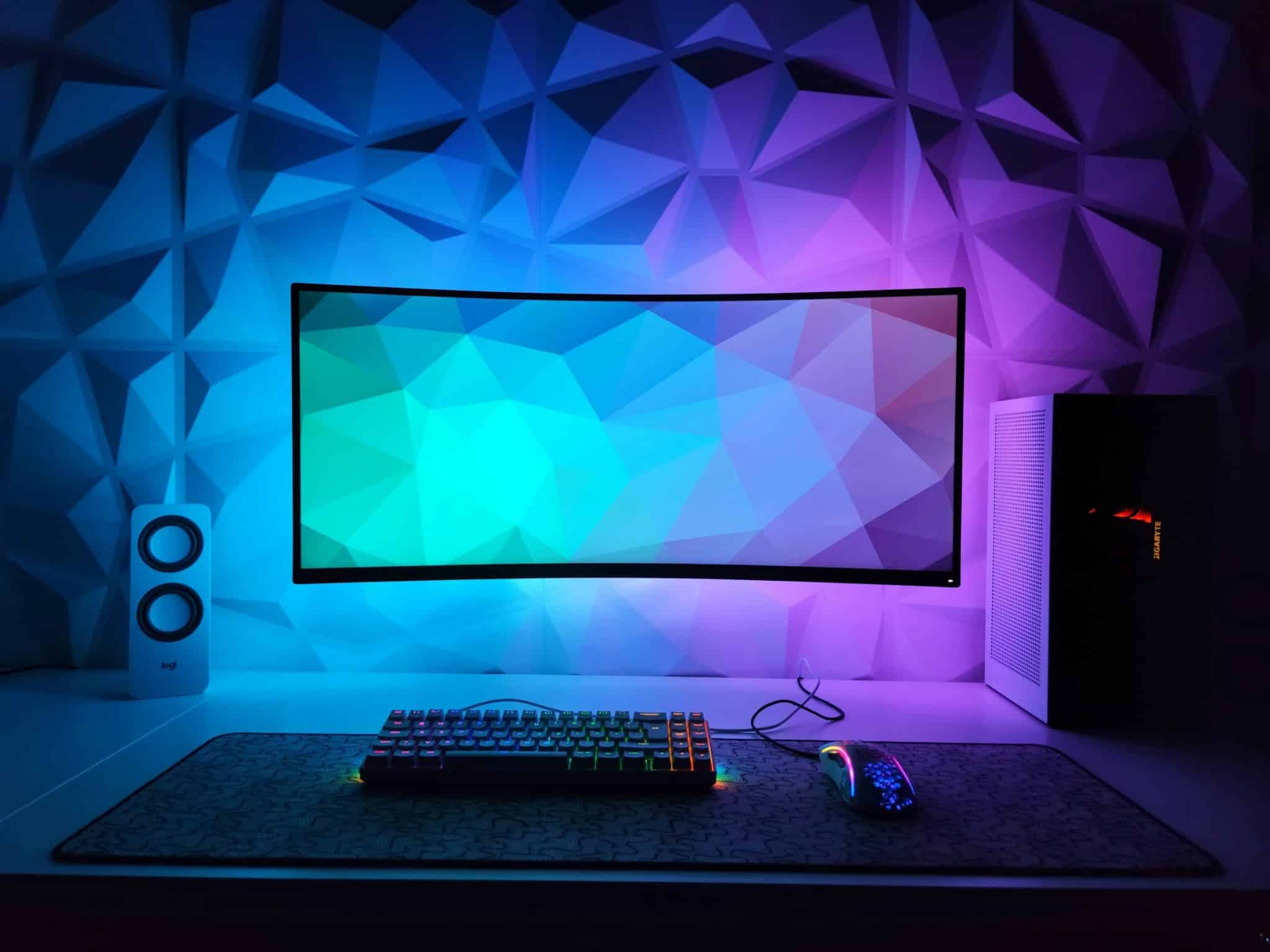If you’ve ever finished a gaming session with your eyes feeling tired and your vision a little blurry, your lighting may be to blame. While lighting is an afterthought for most people when they sit down to play their favorite video games, ignoring this important factor can have a negative impact on your comfort and performance.
The good news is that the right kind of light can reduce eye strain and also add some personality to your gaming space. The right lighting can set the mood and highlight key areas in your gaming setup, like your computer monitor or mouse.
Whether you’re playing a strategy game or a massively multiplayer online game, getting the lighting right will help make your gaming sessions more enjoyable. Keep reading to find out how.
Understanding the Basics of Gaming Lighting
Lighting for gaming usually falls into three categories: ambient, task, and accent lighting. You can think of ambient lighting as the general lighting in a room that serves to create a base layer of light. On the other hand, if you use light to illuminate specific objects like your mouse or keyboard, that would be considered task lighting.
When you want to draw attention to a specific object in a room to add character or depth, you’d be dealing with accent lighting. The type of light you choose can have a big impact on your gaming, especially during extended gaming sessions.
If you play first-person shooters, proper lighting can help minimize glare and reflections and ease eye discomfort. In contrast, those who play casino games often play for shorter sessions and might use light to enhance the atmosphere of their room.
For example, they might choose dynamic and synchronized lights to imitate the environment one would find as they sit down to play table games in a brick-and-mortar casino. Choosing the right lighting is all about making sure you have the best gaming experience possible.
Types of Lighting Solutions for Gaming

LED strip lights are probably the most popular gaming solution among gamers, and for a good reason—they’re versatile and can add just the right amount of ambient light to a gaming setup. The nice thing about LED strip lights is their soft, diffused glow, which enhances the atmosphere and reduces eye strain during long gaming sessions, all without causing unwanted glare. You can place LED strips behind monitors, desks, and shelves to highlight parts of your gaming space.
Smart lights are another solution that works well for gamers who want to enhance their gaming experience. You can control these lights remotely with your smartphone or voice assistants like Amazon Alexa or Google Assistant. These bulbs are highly customizable, and you can dim them or change their colors to match the mood of the game you’re playing.
Bias lighting is another option that works well for gamers who want to create a halo effect by placing a light source behind their screen or monitor. This technique can help minimize eye strain by reducing the contrast between a bright screen and a dark room.
You can attach LED strips to the back of your monitor or TV to create this effect. When setting up bias lighting, you’ll want to make sure the LED strips are distributed evenly, so they create a uniform glow. This setup can make you more comfortable during longer gaming sessions that can take their toll on your eyes without proper lighting.
For task lighting, a good desk lamp is the way to go. Most desk lamps will get the job done, but you should look for features like adjustability, various brightness levels, and color temperature settings. The beauty of the basic desk lamp is it lets you direct the light exactly where you want it.

